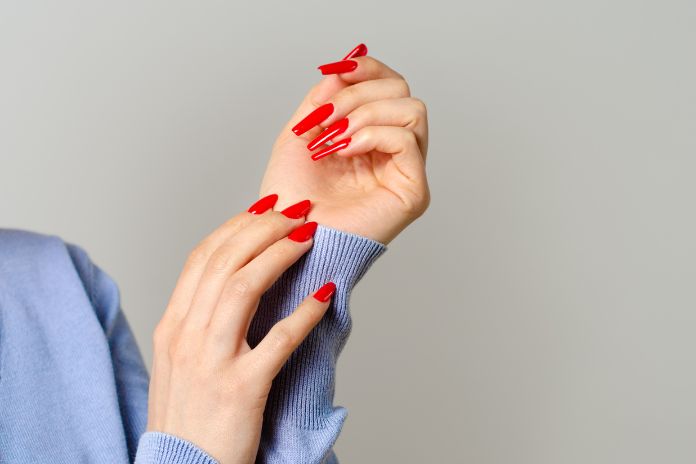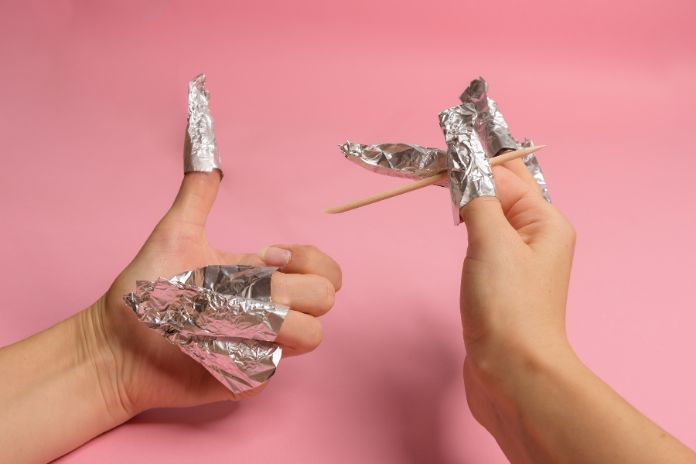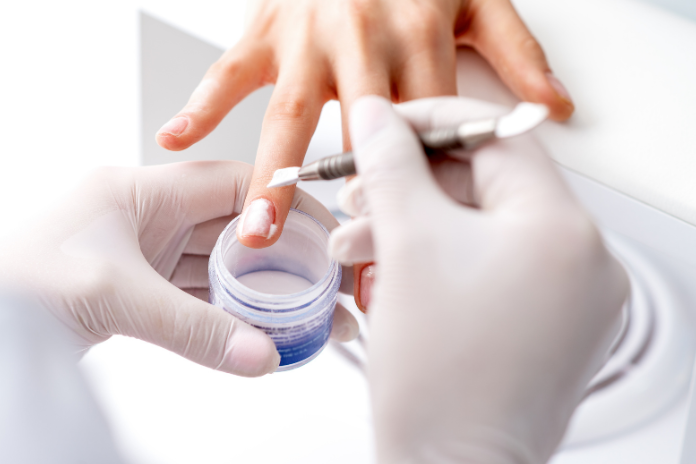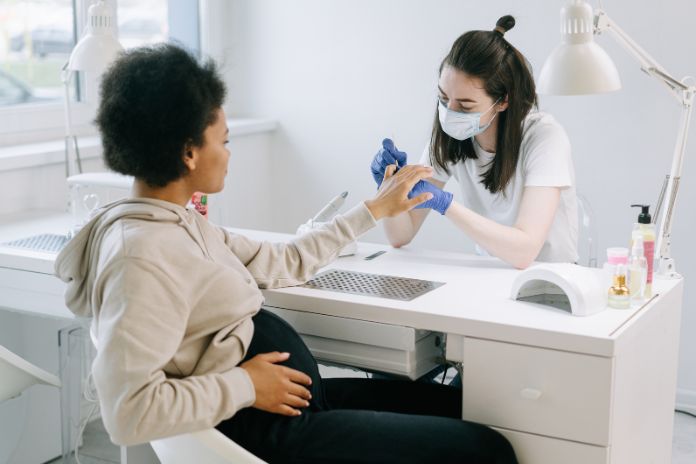Why Your Nail Might Hurt After Getting Acrylics: Understanding the Causes

If you’ve ever gotten acrylic nails, you may have experienced some discomfort or pain afterwards. It’s not uncommon for people to wonder why their nails hurt after getting acrylics. In this article, we’ll explore some possible reasons for this discomfort and what you can do about it.
One reason why your nails may hurt after getting acrylics is that the process of applying them can be quite rough on your natural nails. Acrylics are applied by buffing the surface of your nails to create a rough texture that the acrylic can adhere to. This buffing process can be quite abrasive and can cause some discomfort or pain. Additionally, the chemicals used in the acrylic application process can also cause irritation or sensitivity in some people.
Another possible reason why your nails may hurt after getting acrylics is that they can put pressure on your natural nails. Acrylics are thicker and heavier than your natural nails, and this added weight can cause some discomfort or pain. Additionally, if the acrylics are applied too tightly or if they are too long, they can put even more pressure on your natural nails, which can cause pain or even damage.
Contents
What are Acrylic Nails?
Acrylic nails are a type of artificial nails that are made by mixing a liquid and a powder. The mixture forms a dough-like substance that can be shaped and molded to fit over your natural nails. Once the acrylic is applied, it hardens to create a durable and long-lasting nail extension.
The application process for acrylic nails involves several steps. First, the natural nails are cleaned and prepped. Then, an acid nail primer is applied to the nails to help the acrylic adhere better. Next, the acrylic mixture is applied to the nails using a brush and allowed to dry. Once the acrylic has hardened, it is filed and shaped to the desired length and shape.
Acrylic nails require specific tools to be applied correctly. These tools include a brush, a file, and a buffer. The brush is used to apply the acrylic mixture to the nails, while the file and buffer are used to shape and smooth the nails once the acrylic has hardened.
While acrylic nails can be a great way to achieve long, durable nails, they can also cause discomfort and pain if not applied correctly. The use of an acid nail primer can cause damage to the natural nails and surrounding skin if not used properly. It is important to have acrylic nails applied by a trained professional to avoid any potential harm.
Why Does My Nail Hurt After Getting Acrylics?
Pain and Discomfort
If you experience pain or discomfort after getting acrylic nails, it is not uncommon. This is because the process of getting acrylics involves a lot of filing, buffing, and shaping of the natural nail, which can cause soreness and a tightening sensation. Additionally, the weight of the acrylics can put pressure on the nail bed, causing pain and discomfort.
Allergic Reactions
Some people may experience an allergic reaction to the chemicals used in acrylic nails. This can cause itching, redness, and swelling around the nail bed. If you experience any of these symptoms, it is important to seek medical attention immediately.
Infections
If proper hygiene is not maintained during the application or removal of acrylic nails, it can lead to bacterial or fungal infections. This can cause the nail to become thick and discolored, and may also cause pain and swelling around the nail bed.
Nail Damage
Excessive filing of the natural nail can cause damage, making the nail thin and weak. This can cause the nail to become more prone to breakage and damage, leading to pain and discomfort.
Cuticle Damage
The use of a cuticle pusher during the application of acrylics can cause damage to the cuticles, leading to pain and discomfort. Additionally, the use of cuticle oil can cause the acrylics to lift, leading to pain and discomfort.
Pressure and Swelling
The weight of the acrylics can put pressure on the nail bed, causing swelling and pain. This can be exacerbated if the acrylic nails are too long or heavy.
Length and Weight
The length and weight of the acrylics can also cause pain and discomfort. If the acrylic nails are too long or heavy, they can put pressure on the nail bed, causing pain and discomfort.
In conclusion, there are several reasons why your nail may hurt after getting acrylics. It is important to maintain proper hygiene and to be aware of the potential risks associated with acrylic nails. If you experience any pain or discomfort, it is important to seek medical attention immediately.
How to Avoid Pain and Discomfort
Choosing the Right Nail Technician
When it comes to getting acrylic nails, it’s essential to choose the right nail technician. Look for someone who is experienced and has a good reputation. Don’t be afraid to ask for references or to see their portfolio of work. It’s also important to make sure that the nail salon you choose is clean and hygienic.
Preparing Your Natural Nails
Before getting acrylics, it’s essential to prepare your natural nails properly. Start by removing any old nail polish and then trim and file your nails to the desired length. Next, gently push back your cuticles using a cuticle pusher. Avoid cutting your cuticles, as this can lead to infection and pain.
Filing and Soaking Techniques
When it comes to filing and soaking, there are a few things to keep in mind to avoid pain and discomfort. First, use a high-quality nail file and avoid using a metal file, as this can damage your natural nails. When soaking your nails, use warm water and add a few drops of cuticle oil to help soften your cuticles.
Aftercare Tips
After getting acrylic nails, it’s essential to take care of them properly to avoid pain and discomfort. Start by keeping your nails dry for at least two hours after getting them done. Avoid using your nails as tools, and don’t pick at them. Apply cuticle oil daily to keep your cuticles hydrated, and use a hand cream to keep your hands moisturized.
By following these tips, we can avoid pain and discomfort when getting acrylic nails. Remember to choose the right nail technician, prepare your natural nails properly, use the correct filing and soaking techniques, and take care of your nails after getting them done.
When to Seek Medical Attention
If you experience any of the following symptoms after getting acrylic nails, it may be time to seek medical attention.
Signs of Infection
If you notice any redness, swelling, or discharge around the nail, it may be a sign of infection. Infections can occur when bacteria enter the nail bed through small cuts or breaks in the skin. If left untreated, infections can lead to more serious complications, such as cellulitis or osteomyelitis.
Persistent Pain and Discomfort
It is normal to experience some discomfort after getting acrylic nails, but if the pain persists for more than a few days, it may be a sign of a more serious issue. Pain can be caused by a variety of factors, including improper application, allergic reactions, or nerve damage.
Nerve Damage
Nerve damage is a rare but serious complication of acrylic nails. If you experience numbness, tingling, or a burning sensation in your fingers or toes, it may be a sign of nerve damage. This can occur when the acrylic is applied too tightly or if the nail technician accidentally cuts a nerve.
If you experience any of these symptoms, it is important to seek medical attention immediately. Your doctor can diagnose the problem and provide appropriate treatment to prevent further complications. Remember, it is always better to be safe than sorry when it comes to your health.





